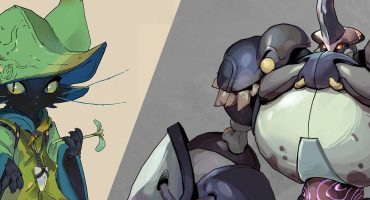Background
My introduction to archaeological 3D modeling was accidental; in fact, when I first arrived at my university the only things I knew about archaeology were from Indiana Jones. Luckily, during my very first day on campus I met one of the most fantastic professors at the University of North Carolina at Chapel Hill, Dr. Stephen Davis, the Associate Director of the Research Laboratories of Archaeology (RLA), who hired me to work as a work-study lab assistant. It was Dr. Davis who taught me not only how to generate archaeological 3D models using structure-from-motion photogrammetry but also why they are so important: 3D models offer a way for archaeologists to preserve, analyze, and share material culture with the public of the present and future.
Over the last three years, I have worked with Dr. Davis and the RLA on models for the interactive online educational resource entitled ‘Ancient North Carolinians: A Virtual Museum of Cultural Heritage and Archaeology’, which includes digital exhibits related to the history and archaeology of North Carolina and resources (including 3D models!) for K-12 teachers and students. Many of the models I’ve made are viewable on the RLA Sketchfab page, while the models I have made for personal projects, fun, or practice can be found on my own page.
The very first 3D model I made was of a Hardaway Side-Notched Spear Point from Stanly County, North Carolina, dating to the Late Paleoindian period (8500-7900 BC).
Approach to 3D Digitization
3D scanning is an important part of my work as an archaeologist and I have had the opportunity to use it for some truly extraordinary purposes. My favorite experience applying the technique was when, last October, I flew to Sitka, Alaska to help digitize Tlingit objects with researchers from the Smithsonian. The chance to help preserve the cultural heritage of the Tlingit community and to share 3D technologies, such as scanning and printing was extremely meaningful to me because I was helping to ensure that the objects of a unique culture would survive for future generations.
I have also had the opportunity to 3D scan artifacts while working on multiple archaeological projects. Utilization of 3D scanning in the field is extremely useful because it allows an object to be viewed, measured, and replicated, even halfway across the world. As the methods and outputs of 3D scanning continue to improve, I will integrate the production of 3D models of artifacts into my archaeological projects for the dual purposes of research and public outreach. As an archaeologist focused on human skeletal remains, I am especially interested in exploring how 3D landmarks can be used in conjunction with statistical software to study archaeological populations.
This is a model of the Sedlec Ossuary I captured during the summer of 2016 right after I finished my first archaeological dig.
One of the most fun ways to use 3D models, however, is to share them! At UNC, I have scanned and 3D-printed dozens of models for events such as the UNC Science Expo and the American Indian Heritage Celebration at the NC Museum of History. I have also worked with Brad Erickson, a doctoral student from UNC-CH, to teach students how to work with VR.
Challenges
Although my introduction to 3D modeling was relatively simple because of the amazing support network at my university, there are still many times when I am confronted with new problems and methodologies. I have learned that the best way to handle these challenges is to ask for help. Given the multitude of diverse researchers engaged in 3D modeling, it is always possible to find someone to collaborate with in order to overcome any challenge. For example, while attempting to address a challenging task in the lab last year, I turned to Sketchfab for help.
The situation was that the Research Laboratories of Archaeology had several dozen artifacts that required 3D models, but they had already been repatriated to the Eastern Band of Cherokee Indians in 2014. Although we had CT scanned them, we did not know how to convert those files into 3D models. By collaborating with Thomas Flynn, I was able to work with the files and create usable models like the one below.
This is a shell gorget from Macon County, North Carolina, dating to 1400-1700 AD. This model was produced from a CT scan and the texture is from digital photos taken in 1994.
Why Sketchfab?
I use Sketchfab because of the community that has developed around it. With an accessible and simple interface, the site can be visited by everyone from kindergarteners to tenured professionals. My favorite aspect of Sketchfab is viewing the models generated by other archaeologists and museums and subsequently integrating their innovations into my own work. With so many of my colleagues on the site, the range of models and techniques continually inspire me to try new things. All things considered, I have loved the journey that 3D modeling has led me on and I can’t wait to see what new technologies and applications the future of 3D modeling holds!


